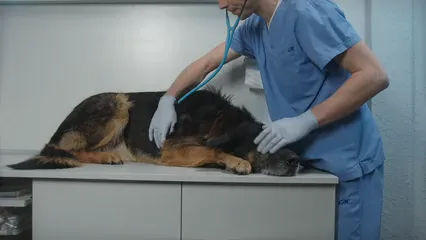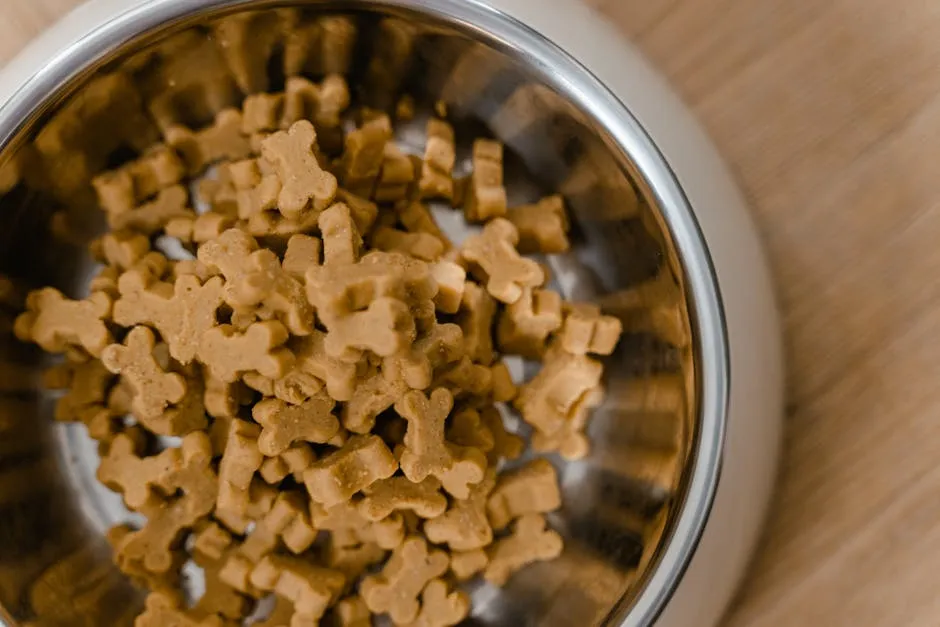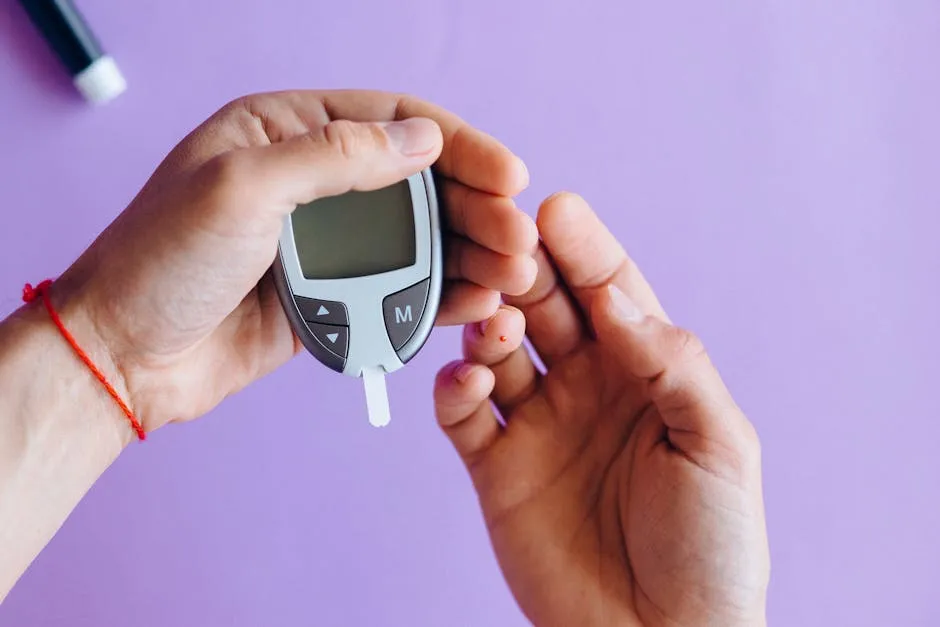Introduction
Canine diabetes is a serious condition affecting our furry friends. It occurs when dogs can’t properly regulate blood sugar levels due to insulin deficiency. This condition is more common than you might think, with nearly 1% of dogs diagnosed during their lifetime. That translates to thousands of pups needing extra care and attention!
Understanding canine diabetes is crucial for effective management. When pet owners grasp the condition’s intricacies, it leads to better treatment outcomes and happier lives for their pets. This article aims to provide comprehensive insights into diagnosing, treating, and managing diabetes in dogs. From recognizing early signs to creating tailored treatment plans, we’ve got you covered.
So, grab a snack (maybe not one for your pup just yet), and let’s jump into the world of canine diabetes management!

1. Understanding Canine Diabetes
1.1 What is Canine Diabetes?
Diabetes mellitus in dogs primarily manifests as two types: Type 1 and Type 2. Type 1, or insulin-dependent diabetes, occurs when the pancreas fails to produce sufficient insulin. This is the most common form in dogs. Type 2, on the other hand, is rarer and occurs when the body becomes resistant to insulin, often seen in older or overweight dogs.
So, how does this impact your dog’s body? Insulin is the key that allows glucose to enter cells, providing them with energy. When insulin is lacking or ineffective, glucose accumulates in the bloodstream. This leads to hyperglycemia, which can cause numerous health issues, including organ damage and lethargy. In short, diabetes means your dog is starving at a cellular level, despite having plenty of food available.
1.2 Causes and Risk Factors
Several factors can contribute to the development of canine diabetes. Genetic predispositions play a significant role, with certain breeds being more susceptible. Breeds like Samoyeds, Miniature Poodles, and West Highland White Terriers are more prone to this condition. If your dog belongs to one of these breeds, you might want to keep a closer eye on their health.
Obesity is another major risk factor. Overweight dogs often struggle with insulin resistance, making it difficult for their bodies to properly process glucose. Age also comes into play; diabetes is more common in middle-aged to older dogs, particularly those over eight years old. Lastly, underlying health conditions like pancreatitis or Cushing’s disease can significantly increase the likelihood of diabetes developing.
Understanding these causes and risk factors helps pet owners take proactive steps. Maintaining a healthy weight, ensuring regular vet check-ups, and being vigilant about any changes in behavior can all contribute to early detection and management of canine diabetes. By staying informed, you can help your furry friend lead a healthy, happy life!

2. Recognizing Symptoms of Diabetes
2.1 Early Warning Signs
Spotting diabetes in your dog can be a game of detective work. Some signs are so subtle, they might just seem like normal aging. But if your furry friend is acting a bit off, it’s time to pay attention. Here are the common symptoms to watch for:
- Excessive Thirst: If your dog seems to be chugging water like a thirsty marathon runner, it’s a red flag. Increased thirst can lead to more frequent potty breaks.
- Increased Urination: This often goes hand in hand with excessive thirst. If your pup is leaving puddles all over the house, it’s time for a vet visit.
- Weight Loss Despite Normal Appetite: This contradiction can be puzzling. Your dog might be gobbling up their food yet still losing weight. It’s like they’re on a diet while enjoying a buffet!
- Lethargy: If your once-energetic pup is suddenly as lively as a sloth, it might be a symptom worth discussing with your vet.
- Cloudy Eyes: This can indicate cataracts, which are common in diabetic dogs. If your dog’s eyes have a cloudy appearance, it’s time to get them checked.
These early signs can be easy to miss, but recognizing them is crucial. Don’t dismiss these changes; they could mean your dog needs a little extra care.

2.2 Behavioral Changes
Diabetes doesn’t just mess with the body; it can throw your dog’s behavior for a loop too. Many owners notice their dogs acting a bit differently. Here’s how diabetes can affect your canine companion:
- Increased Restlessness: You might find your dog pacing or unable to settle down. They may seem anxious or distressed, which can be confusing for both of you.
- Altered Energy Levels: Some dogs become more lethargic, while others might become hyperactive due to fluctuating blood sugar levels. It’s like their energy is on a rollercoaster!
- Changes in Social Behavior: Your dog may withdraw or become more clingy, seeking comfort from you more than usual. They might also show less interest in their favorite toys or activities.
Understanding these behavioral changes is key to effectively managing your dog’s diabetes. If you notice a shift in your pup’s demeanor or routine, it’s best to consult with your vet. After all, our dogs can’t tell us when something’s wrong, but their actions often speak volumes.

4. Treatment Options
Managing canine diabetes effectively involves a multi-faceted approach. This includes insulin therapy, dietary management, and lifestyle adjustments. Each component plays a vital role in maintaining your dog’s health and happiness. Let’s break down these treatment options.
4.1 Insulin Therapy
Insulin therapy is the cornerstone of diabetes management in dogs. It involves administering insulin to help regulate blood glucose levels. Think of insulin as the key that unlocks the doors to your dog’s cells, allowing glucose to enter and provide energy.
The administration of insulin is typically done via injections, usually two times a day. Timing is crucial, as it’s essential to sync the injections with your dog’s feeding schedule. This helps maximize the effectiveness of the insulin. Your veterinarian will demonstrate how to properly administer the injections, and with a little practice, it becomes a routine part of your day.
There are several types of insulin available for dogs. Common options include Vetsulin and ProZinc, both of which are FDA-approved for canine use. Other types, like Detemir and Glargine, are sometimes used off-label. The choice of insulin and the dosage will depend on your dog’s individual needs, weight, and response to treatment. Regular monitoring is essential, especially during the initial treatment phase, to determine the right dosage.
4.2 Dietary Management
Diet plays a critical role in managing diabetes. A consistent, balanced diet tailored for diabetic dogs helps stabilize blood sugar levels. It’s vital to consult your veterinarian when creating a meal plan. They can recommend specific foods that are high in fiber and low in carbohydrates, as these characteristics help keep glucose levels in check.
Feeding your dog the same amount of food at the same times every day is essential. This consistency aids in insulin management and helps avoid sudden spikes or drops in blood sugar. Specially formulated diabetic dog foods are often recommended, such as Hill’s Prescription Diet, as they provide the right nutritional balance. It’s important to resist the temptation to give treats outside of mealtimes, as this can confuse your dog’s metabolism and disrupt their management plan.

4.3 Exercise and Lifestyle Adjustments
Regular exercise is another key component of managing canine diabetes. It helps regulate blood sugar levels and maintain a healthy weight. Establishing a consistent exercise routine is crucial, as fluctuations in activity can lead to unstable glucose levels. Aim for daily walks or play sessions that keep your dog active without exhausting them.
In addition to exercise, lifestyle adjustments may be necessary. For instance, monitoring your dog’s weight is vital, as obesity can complicate diabetes management. If your dog is overweight, work with your vet to develop a weight loss plan that includes diet and exercise modifications.
It’s also crucial to keep a close eye on your dog’s overall health. Any changes in behavior, appetite, or energy levels should prompt a call to your veterinarian. By staying proactive, you can help your dog live a long, fulfilling life despite their diabetes.

5. Monitoring Your Diabetic Dog
Monitoring your diabetic dog is essential for effective management. Regular checks will help ensure that their treatment plan remains effective and that their health is on track.
5.1 Home Monitoring Techniques
There are several methods for monitoring your dog’s blood glucose levels. One common technique is using a glucometer. These devices, like the AlphaTrak 2 Blood Glucose Monitoring System for Dogs, can provide immediate feedback on your dog’s blood sugar levels. Another option is urine testing, which checks for glucose and ketones. While urine tests are less accurate than blood tests, they can still provide valuable insights.
Keeping a detailed log of your dog’s food intake, insulin doses, and glucose levels is crucial. This information is invaluable during veterinary visits, as it helps your vet assess how well your dog’s diabetes is being managed. Regularly reviewing this log can also highlight patterns and help identify any adjustments needed in their treatment.
By staying vigilant and maintaining an effective monitoring routine, you can significantly improve your dog’s quality of life and overall health.
5.2 Regular Veterinary Check-ups
Routine veterinary visits are vital for dogs with diabetes. Think of them as pit stops in a race. These check-ups allow your vet to monitor your furry friend’s health and ensure their treatment plan remains on track. Regular assessments help detect any changes in your dog’s condition before they escalate into bigger issues.
During these visits, your vet will evaluate your dog’s blood glucose levels, adjust insulin dosages, and make necessary dietary recommendations. Consistency is key! The vet will likely recommend check-ups every three to six months, depending on your dog’s specific needs. These appointments provide an opportunity for you to discuss any concerns or changes you’ve noticed in your pup’s behavior or health.
Beyond just monitoring glucose levels, these visits also allow the vet to check for potential complications. Diabetes can lead to various health issues, including urinary tract infections and even cataracts. By catching these concerns early, you can help your dog avoid unnecessary discomfort and maintain a better quality of life.

6. Managing Complications
Managing diabetes in your dog isn’t just about keeping blood sugar levels stable. It’s also crucial to recognize and address any complications that may arise. Let’s get into the nitty-gritty of managing these challenges.
6.1 Recognizing Hypoglycemia
Hypoglycemia, or low blood sugar, can be a serious concern for diabetic dogs. Symptoms can sneak up on you, so it’s essential to be vigilant. Common signs include lethargy, weakness, confusion, and even seizures. If your pup seems unusually tired or unresponsive, it’s time to act fast!
The first step is to check your dog’s blood sugar level if you have a glucometer. If it’s low, don’t panic! Administer a quick source of sugar, like corn syrup or honey, either orally or rubbed on their gums. This should help raise their blood sugar levels. However, if your dog shows severe symptoms or doesn’t respond, contact your veterinarian immediately for further guidance.

6.2 Long-term Complications
Unmanaged diabetes can lead to a host of long-term complications. One of the most common issues is the development of cataracts, which can affect your dog’s vision. It’s a bit like watching your favorite movie through a foggy window—frustrating and not fun at all! Regular eye check-ups can help catch these problems early.
Another serious complication is diabetic ketoacidosis, a condition that occurs when the body starts breaking down fat instead of glucose for energy, leading to a dangerous buildup of acids in the blood. Symptoms include vomiting, dehydration, sweet-smelling breath, and rapid breathing. If you notice any of these signs, seek veterinary assistance immediately.
Regular vet visits and timely monitoring can significantly reduce the risk of these complications. Remember, managing your dog’s diabetes is a team effort between you and your vet. With diligence and proactive care, your canine companion can lead a happy, fulfilling life!
7. Life with a Diabetic Dog
7.1 Adapting Your Routine
Living with a diabetic dog can feel like you’ve suddenly joined a quirky club. Welcome to the world of precise meal timings, insulin injections, and never-ending water bowls! But don’t worry; with a few key adjustments, you and your furry friend can lead a happy life together.
First, establish a routine. Dogs thrive on consistency, so aim to feed your pup at the same times every day. This helps stabilize their blood sugar levels and makes insulin administration much easier. Consider investing in a PetSafe Healthy Pet Gravity Feeder. It’s like a robot butler for your dog!
Next, keep a close eye on their food. Measuring portions can prevent overeating and help maintain a healthy weight. Your vet can recommend a specialized diabetic diet. Just remember, no sneaky treats! Your dog might bat those puppy eyes at you, but resist the temptation to share your snacks.
Exercise is also crucial. Regular walks or play sessions help regulate blood sugar. However, be mindful not to overdo it. Sudden bursts of activity can lead to hypoglycemia, which is a fancy term for low blood sugar. Keep a close watch on your dog’s energy levels and adjust their activity as needed.
Lastly, monitor their water intake. Diabetic dogs often drink more than usual. Always provide fresh water and keep an eye on how much they’re consuming. If the water bowl is empty every hour, it might be time for a vet check-up.

7.2 Emotional Support for Owners
Caring for a diabetic dog can be an emotional rollercoaster. It’s normal to feel overwhelmed, anxious, or even guilty about their condition. You’re not alone in this; many pet owners share these feelings. Remember, it’s okay to seek help.
Connect with fellow pet parents, either online or in local support groups. Sharing experiences can provide comfort and practical advice. There’s nothing like bonding over the joys and challenges of managing canine diabetes!
Additionally, don’t hesitate to reach out to your veterinarian. They’re not just there for check-ups; they can also offer support and guidance. Sometimes, just talking to someone who understands can ease your worries.
Consider journaling your dog’s symptoms and your feelings. Writing can be therapeutic and help you track changes in their condition. Celebrate small victories together, like a stable blood sugar reading or a successful insulin injection. Each day is an opportunity to learn and grow with your furry friend.
Finally, remember to care for yourself. It’s easy to get lost in the daily routine and forget your own needs. Set aside time for self-care, whether it’s enjoying a hobby or taking a relaxing walk. A happy owner can lead to a healthier, happier dog.

Conclusion
Understanding and managing canine diabetes is crucial for your furry friend’s well-being. It’s a challenging journey, but with the right knowledge and approach, your dog can lead a joyful life. Work closely with your veterinarian to create a tailored management plan. They’re your best ally in this endeavor.
Your commitment and care can make all the difference. With consistent management, many diabetic dogs live full, active lives. Embrace the journey, and remember: your love and dedication are the best medicine for your furry companion. Together, you can face any challenge that comes your way, ensuring a bright future filled with wagging tails and happy moments!
Understanding and managing canine diabetes is essential for your dog’s health. Learn more about it here.
For added peace of mind, consider investing in a Pet First Aid Kit. It’s always good to be prepared for any emergencies!
Please let us know what you think about our content by leaving a comment down below!
Thank you for reading till here 🙂
All images from Pexels






There is also an A1C test now for cats and dogs.